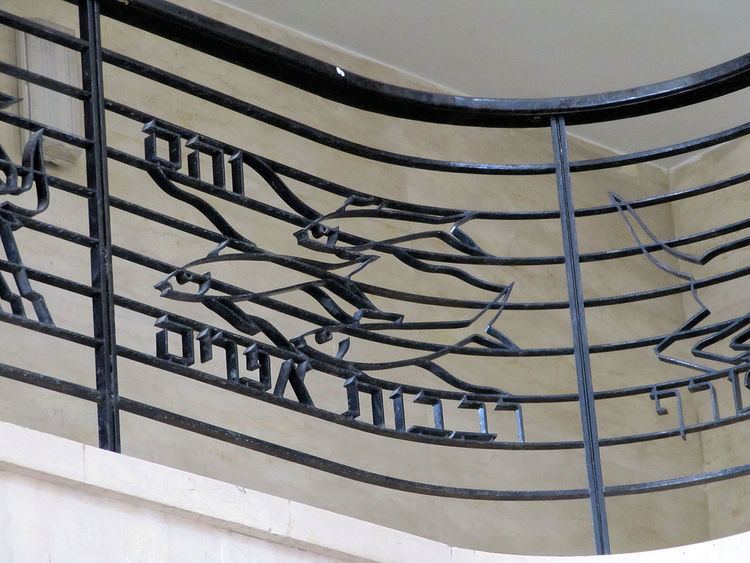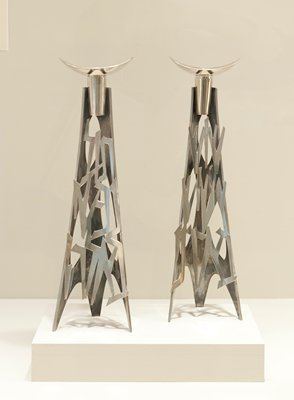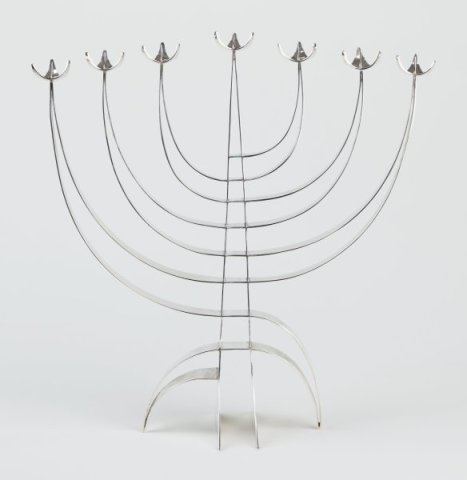Name Ludwig Wolpert | ||
 | ||
Died November 6, 1981, Manhattan, New York City, New York, United States | ||
Ludwig Yehuda Wolpert (Yehuda Wolpert), (7 October 1900 - 6 November 1981) was an Israeli-American goldsmith and designer, born in Germany. He is celebrated as the first artist to design Judaica in modern styles.
Contents

Biography

Ludwig Yehuda Wolpert was born in a small village near Heidelberg, Germany to a poor religious orthodox family. During his childhood he suffered as a result of his family's Lithuanian (immigrant) origin and was often teased because of his cleft lip. Following the presentation of the works in the 1930 exhibition "Kult und Form" ("Ritual and form") at the Jewish Museum in Berlin, his works became well known in the German Jewish world. His works were greatly influenced by Modernism design, especially the Bauhaus movement. Wolpert works avoid decorations, and rely on clean, geometric shapes.
In 1933, following the Nazi rise to power in Germany, he immigrated to the Land of Israel with his family. There, he worked in the "B. Friedland" Workshop where he design and manufactured silver tableware and Jewish ceremonial art. Together with Victor Solomon Reese, he made the sculpture "The Flying Camel", the symbol of the "Levant Fair", under the architect Aryeh Elhanani.
In 1935 he began teaching at Bezalel Academy of Arts and Design in Jerusalem, where he headed the Department of Metal together with jeweler David Heinz Gumbel. Wolpert placed an emphasis on the use of Hebrew typography in Jewish ceremonial art and employed modern lines within works. In addition to his teaching continued to create modern Judaica works at the school’s workshop. In 1942 he established an independent workshop in Jerusalem. In 1956 he emigrated to the United States, where he headed the Tobe Pascher Workshop for Modern Jewish Art at the Jewish Museum in New York City.
